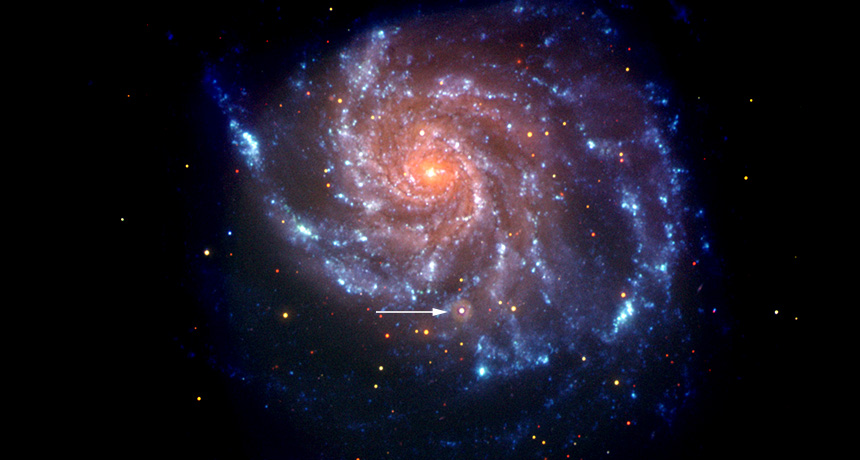Color differences could recalibrate cosmic acceleration rate
Two flavors of Type 1a supernovas complicate distance estimates

STAR BRIGHT Color differences between some nearby supernovas, such as the one shown here (arrow) in this image of the M101 galaxy about 22 million light-years away, and ones farther away could lead to overestimates of how much the cosmic expansion is accelerating.
Swift/NASA







